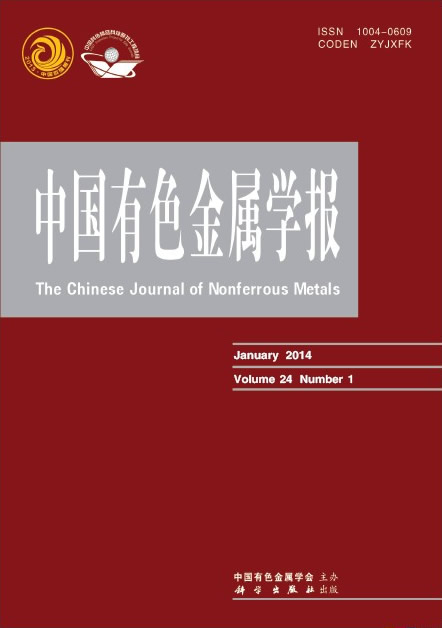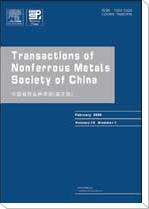(1. 河南科技大学 材料科学与工程学院,洛阳 471003;2. 上海交通大学 材料科学与工程学院,上海 200030)
摘 要: 利用MCF−30冲蚀磨损实验机,对固溶态及随后经过不同形变热处理的Cu-Cr-Zr合金进行液固两相流冲蚀磨损实验,并运用扫描电镜对其微观形貌进行观察与分析。结果表明:在两种不同介质冲蚀磨损实验中,固溶态合金冲蚀磨损质量损失最大,且随形变时效后加工变形程度的增大,冲蚀磨损质量损失呈先逐渐下降然后上升的变化趋势;添加少量石英砂(10 g/L)后,合金冲蚀磨损质量损失约增加19%~35%;铜合金线材二次加工变形率在50%~80%之间时,具有良好的抗冲蚀磨损性能
关键字: Cu-Cr-Zr合金;液固两相流;冲蚀磨损性能;变形率
(1. School of Materials Science and Engineering, Henan University of Science and Technology, Luoyang 471003, China;2. School of Materials Science and Engineering, Shanghai Jiao Tong University, Shanghai 200030, China)
Abstract:Using MCF-30 erosion wear resistance testing machine, the liquid-solid two-phase flow erosion wear test of Cu-Cr-Zr alloy contact wire solution treated or drawn in different deformation ratios subsequently were carried out in two mediums imitating the environments of industrial atmosphere and trace addition of arenaceous quartz in it. The morphology of Cu-Cr-Zr alloy was observed by SEM. The results show that the value of mass loss ratio of the soluted alloy is the highest and those of the other alloys decrease gradually while then rise slightly with the increasing deformation ratio. With trace addition (10 g/L) of arenaceous quartz, the values of mass loss ratio of the tested alloys are increased by about 19%−35%. These Cu-Cr-Zr alloys with 50%−80% deformation ratio have better erosion wear resistance based on this experiment.
Key words: Cu-Cr-Zr alloy; liquid-solid two-phase flow; erosion wear resistance; deformation ratio


